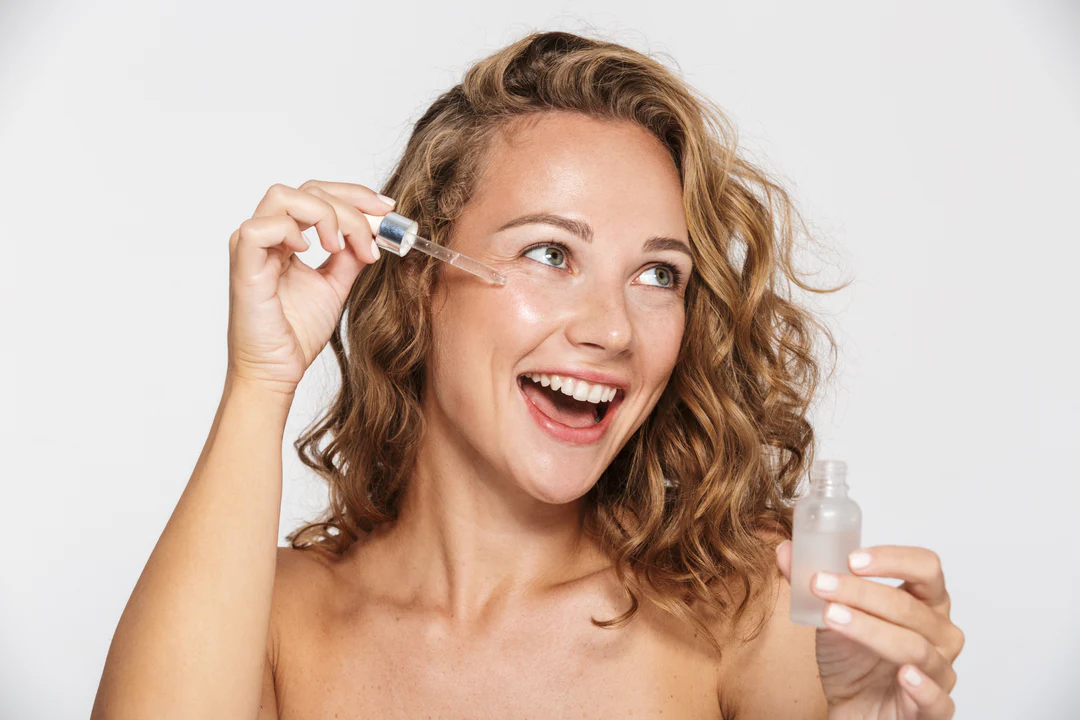10 Tips for Using a Face Mask
There’s nothing better than relaxing with a face mask, especially on a cloudy night, and no amount of persuasion can stop you!
Here we share our top tips for using a face mask so you can get the best out of the product and see the benefits to your skin!
1. Cleanse your skin
Let me ask you a question: would you shower with your clothes on? It’s a bit silly to suggest something like that, right? Well, applying a face mask is basically the same as putting on makeup. To really see a difference in your skin, remove all your makeup, including eye makeup like mascara. This allows your skin to absorb the serum in the mask that’s rich in antioxidants and nourishes the skin. This won’t be the case if you’re still wearing makeup, as the mask will trap products like foundation in the skin, which can clog pores and cause breakouts and blemishes.
2. Use before makeup
If you have time, apply a face mask in the morning before makeup. It’s a great way to hydrate your skin and give it a healthy glow, and it looks amazing when paired with foundation! In cold weather, our skin can get a bit stressed and irritated, leading to all sorts of problems, from dry patches to acne! Sheet masks help hydrate your skin, eliminate dry patches, soothe and reduce redness on blemishes, and make your foundation apply perfectly and last all day long!
3. Massage
This little trick will add a little bit of luxury to your mask. Once you’ve applied the mask all over your face and made sure your skin is smooth, you can give yourself a mini facial. Apply gentle pressure to your skin and massage in circular motions all over your face. You can also do upward strokes as this is very anti-aging and counteracts the force of gravity that causes your skin to sag. The pressure and movement also stimulates blood circulation, making your face appear plumper, fuller, and glowing with an amazing glow!
4. Jump in the Shower
After applying your mask, you can also jump in the shower. The heat and steam from the water acts like a sauna, opening up your pores and ensuring that the vitamins, hyaluronic acid, and all the other beneficial ingredients penetrate quickly and deeply into your skin. In a way, this will enhance your mask and make the most of it. Just be careful not to get it too wet!
5. Cut your mask to size
Facial masks can sometimes be a little too big. So, cut off the excess material so that the mask fits your face perfectly. Don’t waste the extra mask, use it on other areas like your neck and shoulders. Even dry areas like your knees and elbows can benefit from the extra moisture!
6. Use a scrub
It’s a good idea to use an exfoliator before using a mask. Not only do they cleanse your skin thoroughly, but they also remove all the dead skin cells that build up on your skin, which can make it look dull and dry. Sheet masks are different from other masks because they don’t exfoliate, so you don’t have to worry about your skin being irritated as much. Since your skin is fresh and clean, it will also absorb the essence in the mask faster!
7. Use them on the plane
Whether it’s a long or short haul, flying can be hard on your skin! Remember to drink water during your flight, but water can’t moisturize all organs and skin! Put your favorite mask in your carry-on luggage. Yes, wearing a mask during a flight will make you look a little weird, but your skin will thank you for the help, and I’m pretty sure the crew has seen worse!
8. Turn your mask over
This trick ensures that your vitamin-rich serum doesn’t go to waste. First think about how long you need to leave the mask on, then halfway through, take it off and flip it over. How to apply a new amount of serum to your skin without wasting any product! Don’t forget to smooth out any wrinkles and overlaps of the mask.
9. Don’t wash your face
Don’t wash your face after taking the mask off, even if you want to. This means that all the potent antioxidants, vitamins, and beneficial acids are wasted and do nothing for your skin! If your face still feels a little damp after applying the mask, simply pat the remaining serum on until it’s fully absorbed into your skin.
10. Collect a collection
The variety of sheet masks on the market is incredible! There are masks that will give your skin a glow, soothe your skin, lighten pigmentation, and solve all of your problems. The great thing about sheet masks is that they are very affordable, giving you the opportunity to try as many as you want without breaking your budget. Once you find a few that you like and work for you, you can stockpile them and use them when you need them!
There are many different benefits of sheet masks, and we hope these tips can help you make the most of them. It’s all about experimenting and finding what works for you and gives you the best skin possible. Once you’ve done that, you’ll be able to easily incorporate sheet masks into your skincare routine!
DQH Can I use salicylic acid first and then vitamin C?
It’s easy to create a skincare routine, but knowing how to use it is another thing entirely. In most cases, if you’re not getting the desired skin results, it could be due to the layering of conflicting ingredients. So, is it possible that salicylic acid and vitamin C are such ingredients? Or are these active ingredients the duo that’s been missing from your skincare routine? If you want answers, stick around because today we are going to explain the benefits of salicylic acid and vitamin C and how they can be used in your daily life.
What are the benefits of salicylic acid for skin?
Salicylic acid is one of the most commonly used beta hydroxy acids and is favored by many people with oily, acne-prone skin. This acid is derived from willow bark, and unlike its water-soluble relatives (called alpha-hydroxy acids), salicylic acid is oil-soluble, which means it can penetrate deeper into the lower layers of the skin. Once it reaches the lower layers, it can help unclog pores of excess sebum, dirt, bacteria, debris, and impurities. This results in clearer skin tones and greater definition.
Not only does salicylic acid benefit the underlying layers, but the outer surface of the skin benefits as well. When applied to the skin, salicylic acid removes the buildup of dead skin cells. This is accomplished by breaking the bonds that hold dead cells to the surface. Over time, this can cause the complexion to look dull and prone to acne, blackheads, and other blemishes.
If you’d like to learn more about salicylic acid and how it can improve your skin, check out this dedicated blog post from a beauty insider.
What are the benefits of vitamin C for skin?
Vitamin C is considered one of the most powerful antioxidants, which means it is very effective at fighting free radicals and preventing them from causing further skin damage. Examples of free radicals include pollution, central heating, UV rays and harsh climate. They attack proteins, fats and cell membranes as soon as they come into contact with the skin, causing signs of premature aging such as fine lines and wrinkles as well as hyperpigmentation, flaky patches of skin and loss of elasticity.
Many people usually prefer to use vitamin C in their morning routine as this ingredient gives the complexion a radiant glow. You’ll also find that vitamin C can target areas of hyperpigmentation, plumping the skin and reducing the appearance of fine lines and wrinkles.
The thing about vitamin C is that there are a lot of outdated studies going back to the 1950s that describe vitamin C as an unstable skin component. Thanks to improvements in modern technology, this is no longer the case as all products now contain a stable form of vitamin C.
Visit The Beauty Insider to learn more about vitamin C. So please check out our blog post.
Can I use salicylic acid first and then vitamin C?
Yes, you absolutely can. In fact, it’s thought that using salicylic acid before using vitamin C ensures it penetrates faster and works faster.
This is an efficient way to utilize two power sources, and the reason has to do with pH. For example, the skin’s natural pH is about 4.7, making it slightly acidic. Salicylic acid and vitamin C are also both acidic, and you’ll find that vitamin C is absorbed quickly into the skin. Therefore, using salicylic acid beforehand can increase the acidity of the skin and allow vitamin C to penetrate into the skin faster.
While this is considered an effective way to combine two powerful ingredients, you need to be aware of your skin type and how it reacts to certain active ingredients. Even people with perfect, normal skin can experience skin sensitivity and irritation. Therefore, always consult a doctor or dermatologist before using any new products on your skin.
It’s also important to follow skin application rules. In this case, you need to use the product correctly to ensure you get the best results for your skin. If you’re not sure what I mean, the basic rule for skin is to start with the thinnest consistency and work your way up to the thickest consistency. This prevents a barrier from forming on the surface, preventing other active ingredients from penetrating the skin.
Can I use salicylic acid at night and vitamin C in the morning?
Yes, absolutely, this is considered the most effective way to get returns without any adverse side effects. This is because there is enough time between applications to ensure that the skin’s pH levels return to balance.
You’ll also find that Vitamin C is rich in antioxidants and is perfect for use in the morning to ensure your skin is protected and looking its healthiest. Due to the small size of salicylic acid molecules, it is an acid that is able to reach the deepest parts of the skin. While this is effective at keeping skin clear, it also increases the risk of irritation and photosensitivity. Therefore, many people prefer to use powerful BHAs in their evening routine without exposure to UV rays, pollution, or harsh weather.
Warning: If you avoid using sunscreen every day, none of these ingredients will do what your skin needs. The combination of chemical peels and powerful ingredients increases the risk of further damage to the skin’s surface. Use SPF 50 every day to keep your skin protected and your lipid barrier healthy, even on cloudy days, keeping your skin in top condition.



